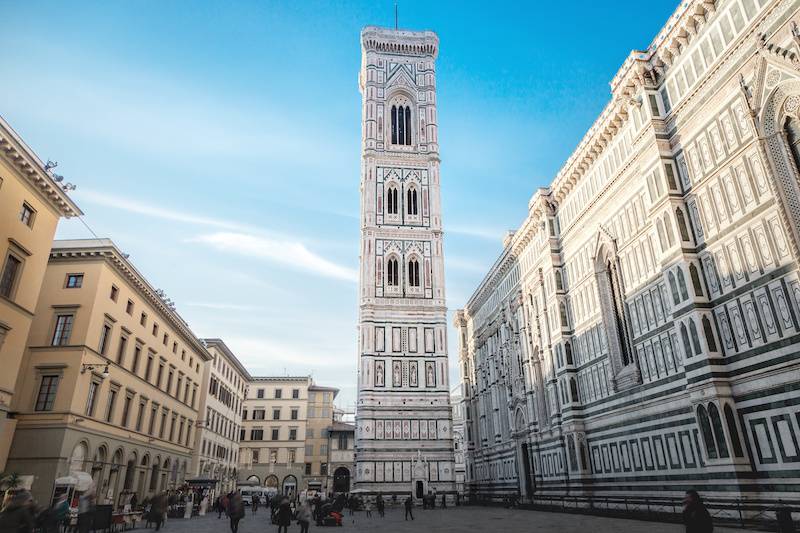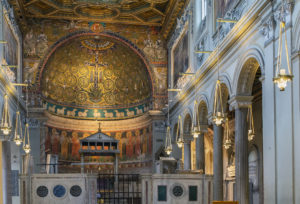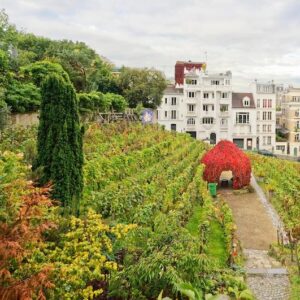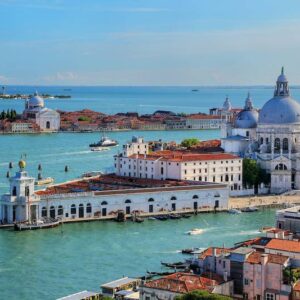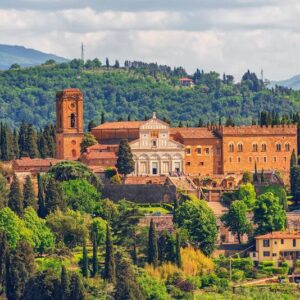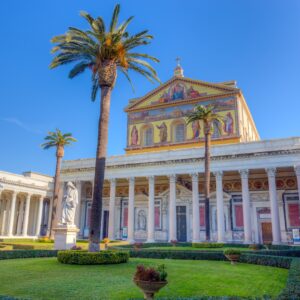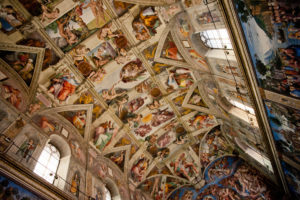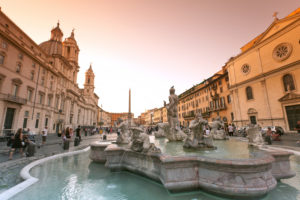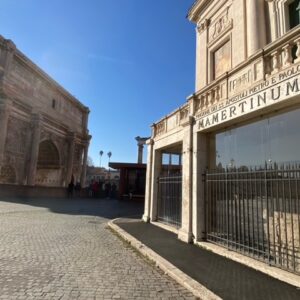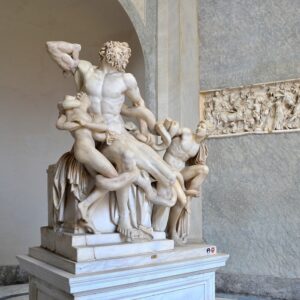Florence can rightfully claim the title of the cradle of Italian art, with the great names of sculpture, painting, and architecture that have made the city great over the years. A visit to the Florentine capital means optimizing the time available as much as possible, trying to see as many things as possible. Churches, palaces, museums, bridges, workshops… everything in Florence exudes art. Among these immense masterpieces, the Campanile di Giotto certainly deserves a visit, which with its 84.7 meters in height dominates Piazza del Duomo and stands imposingly next to the Cathedral of Santa Maria del Fiore.
Construction of the Campanile di Giotto
Considered one of the greatest masterpieces of Italian Gothic, its construction was entrusted to Giotto in 1334, at the time considered the most important artist active in that period; in the following three years, the great Italian master initiated the construction of the bell tower, and upon his death, the project passed first into the hands of Andrea Pisano, his pupil, and then into those of Francesco Talenti who completed the bell tower in 1359, varying the original project with the invention of the terrace crown instead of spires that would have made the tower even taller.
Characteristics and Architectural Details
The Campanile di Giotto is entirely clad in white, red, and green marble, the same ones that adorn the Duomo, worked with geometric motifs and stylized flowers with the first two levels enriched by a sculptural decoration made between the 14th and 15th centuries. The structure is horizontally divided by frames that delimit five overlapping floors. The portal is characterized by a tympanum adorned with sculptures and a series of twenty-six hexagonal marble panels depicting the creation of the Progenitors and human activities (arts and industries). At the second level, there is a second cycle of 28 lozenge-shaped marble panels, with blue glazed bas-reliefs depicting the celestial powers that govern men: the seven Planets, the seven Christian Virtues, the seven Liberal Arts, and the seven Sacraments. Here, on the northern wall, there is a door that once provided direct access to the Cathedral. The three subsequent floors were instead designed and built by Francesco Talenti who abandoned sculptural decorations in favor of a decoration in paired mullioned windows, which give lightness to the tower’s momentum and an impression of lightness. Despite the different hands that worked in subsequent periods, the Campanile di Giotto appears as a unitary and coherent structure, thanks above all to the marble cladding, the buttresses that join the different floors together, and the balance and proportion of volumes typical of classical art.
The Bells of Campanile di Giotto
The Campanile di Giotto has seven bells, one for each musical note. The largest bell is called Santa Reparata, in honor of the Saint to whom the ancient Cathedral is dedicated, and dates back to 1475. The others are called Misericordia, Apostolica, Assunta, Mater Dei, Annunziata, and Immacolata, all names linked to the Madonna to whom the Cathedral of Santa Maria del Fiore is dedicated. The special thing is that the sound produced by the bells varies according to religious holidays.
Useful Information for Visitors
The visit to the Campanile can be included in our 3-hour Florence Private Walking Tour for Families.
To climb to the top of the Campanile di Giotto, it is necessary to purchase an entrance ticket, valid for the Grande Museo del Duomo, which allows access to all monuments and is valid for 72 hours from the first entry.
Cost of a single ticket: €20 (Cathedral, Dome, Crypt, Baptistery, Bell Tower, and Opera del Duomo Museum)
Children from 6 to 11 years old: €3
Children under 6 years old: Free entry
Visits to the Campanile di Giotto in Florence are possible every day from 8:30 am to 7:20 pm. The last entry is at 6:50 pm.

